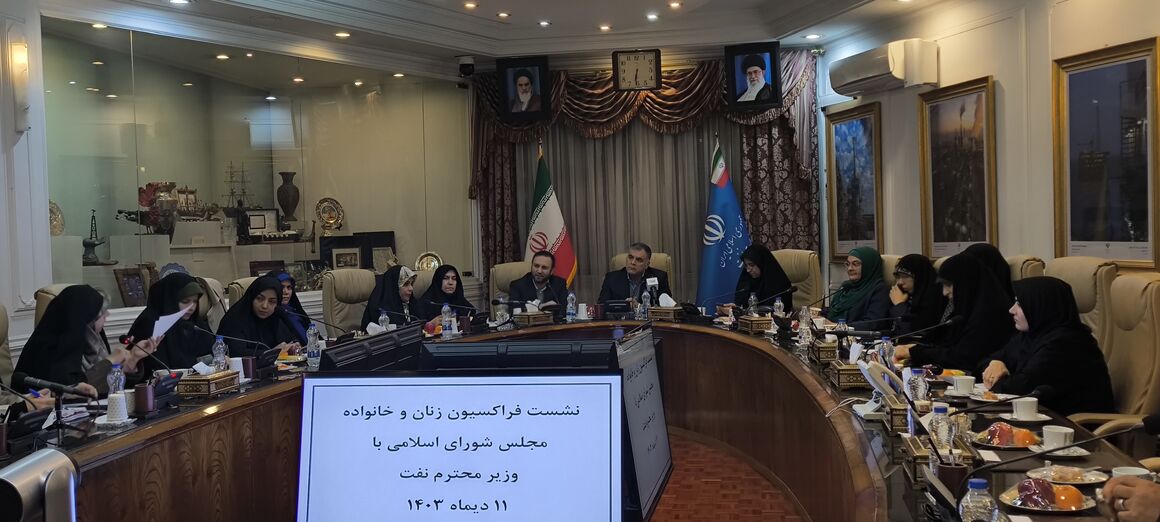Speaking on Tuesday at a meeting with the Women's Caucus of the Parliament, Mohsen Paknejad noted that the accumulation of energy imbalance is troubling the public.
He stated that energy imbalance and its repercussions were among the key topics discussed at a recent meeting of the heads of the three branches of government.
Paknejad reported that more than 860 million cubic meters (mcm) of natural gas are supplied to the network daily, with much of it consumed by households, businesses, and non-major industries. He pointed out that residential consumption during recent cold weeks had reached 670 mcm daily.
The minister criticized inefficient household gas usage, particularly the widespread use of gas heaters, which leads to significant waste.
“Addressing the energy imbalance requires both increasing production and managing demand,” he said.
Balancing production, consumption
Paknejad explained that while expanding gas fields and investing billions of dollars boost production, consumption optimization and demand management remain neglected.
"Despite increased production, we are still lagging behind consumption, perpetuating the imbalance," he emphasized.
The minister added that legal frameworks within the Seventh Development Plan provide opportunities to address these challenges, with public cooperation being essential for optimization.
Impact of '2 Degrees Less' campaign
The minister noted that the "'2 Degrees Less" campaign had a tangible impact on gas consumption. While household consumption during this year’s cold days was forecasted to reach 700 mcm daily, the campaign saved 30-35 mcm daily, ensuring stability in the gas network.
Addressing power plant fuel supply
Paknejad acknowledged power outages in the country, explaining that the Ministry of Energy is responsible for managing power plants, which receive fuel—gas, diesel, and fuel oil—from the Oil Ministry.
He stressed that when gas supply to power plants is limited, they must switch to liquid fuels.
Increased delivery of liquid fuels to power plants
The minister stated that last year, power plants received an average of 35 million liters of diesel daily, a figure that has risen to over 50 million liters thanks to efforts by the National Iranian Oil Refining and Distribution Company.
He also noted that there were no production or delivery issues with fuel oil.
Gas production has increased by 30 mcm daily in the past three months, breaking records for gas delivery to the network.
Paknejad added that 16 power plants can use fuel oil, though three were sealed by the Environmental Protection Organization and two are located in urban areas.
Investment needs, air pollution solutions
Paknejad said $45 billion in investment is required to increase daily gas production to 1.38 billion cubic meters by the end of the Seventh Development Plan.
He also stressed the need for measures like chimney filters at power plants to combat air pollution, citing international practices.
The minister called for improving the quality of oil products, replacing inefficient heaters through private-sector investments, and considering the financial well-being of citizens when implementing price-based solutions.
“Energy consumption must be managed alongside production to transition toward cleaner fuels like natural gas,” he stated.
South Pars pressure-boosting plan
Paknejad emphasized the urgency of implementing the South Pars Pressure Boosting Plan, warning that failure to act could lead to an annual production loss of 25 mcm from the shared gas field.
He outlined plans for seven pressure-boosting centers, each requiring $2.5 billion in investment. In total, the plan would need approximately $17 billion, potentially generating $800 billion in revenue over the field’s lifespan.
By the year’s end (March 20, 2025), a $6 billion package for the pressure-boosting plan will be signed, he added.
Oil export outlook
The minister highlighted increased oil production in recent months, asserting that all produced oil can be exported.
He expressed hope that the upcoming US presidential administration would not impose additional restrictions on Iranian oil exports but noted contingency plans are in place to mitigate potential challenges.


Your Comment